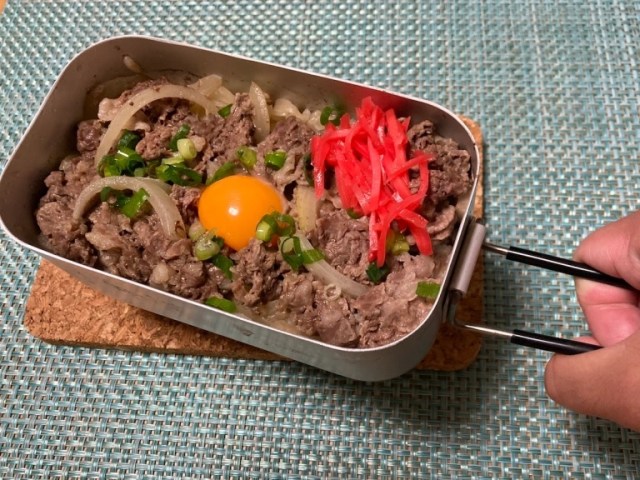
An outdoor cooking recipe that’s too good to wait until your next camping trip to try.
There’s a simple purity to Japanese rice bowls. You’ve got everything you need in a single bowl, with all the ingredients’ flavors mixing together into a delicious and nourishing harmony.
Of course, even if you only need one piece of tableware to eat a rice bowl, you need all sorts of pots and pans to make the rice bowl right? Not necessarily, because we’ve got a recipe that lets you cook an entire gyudon, or beef bowl, in a single pan that you can eat out of. And yes, that means that you don’t even need a rice cooker! All you need is a mess tin, of the type you can get from any camping or outdoor goods supplier.
Ingredients:
● Rice (144 milliliters [4.7 ounces])
● Water (180 milliliters [6.1 ounces])
● 4-times concentrated mentsuyu bonito broth stock (2.5 tablespoons)
● Mirin cooking sake (1 tablespoon)
● Beef (150 grams [5.3 ounces])
● 1/2 onion
● 1 egg yolk
● Pickled ginger (to taste)
● Green onion (to taste)
Once again, this recipe comes from Japanese YouTuber chef Ken Outdoor Cooking, and while it’s originally meant to be made while camping, there’s nothing stopping us from using it to whip up some super-easy, ultra-tasty gyudon at home too.
Step 1: Pour the rice and water into the mess tin and let it soak for 30 minutes.
Step 2: Slice the onion.
Step 3: Cut the beef into strips approximately two centimeters (0.8 inches) wide.
Step 4: Once the rice has soaked for 30 minutes, pour the mentsuyu and mirin into the mess tin ad give it a few light stirs.
Step 5: Toss in the onions and beef. In particular, you want to make sure the beef is evenly distributed so that all of it gets properly soaked with the broth’s flavor.
Step 6: Now it’s time to close up the lid and start cooking.
If you’re using a block of solid cooking fuel, Ken says you can just let it go until the fuel is used up. On the other hand, if you’re using a gas burner, you want to start off cooking on medium heat for the first 10 to 15 minutes, then switch to low heat for another 10 minutes. That might seem like a long time, but gyudon beef is a type of nimono, traditional Japanese simmered dishes, and so the cooking process is a slow and steady one.
▼ Since the contents are simmering, you might want to place something on top of the mess tin to keep the lid from lifting up while the heat is on.
Step 7: Once the cooking is done, wrap the mess tin in a towel to let it steam for a final 15 minutes.
Step 8: At this point, the gyudon aroma should be becoming unbearably enticing. Luckily, it’s almost ready to eat, so carefully remove the mess tin’s lid, making sure not to singe your fingertips.
Step 9: If necessary, spread out the meat to smooth away any clumped sections, then pour your egg yolk in the center.
This is actually an optional step. Some people prefer their beef bowl without egg, and that’s fine. For those who do appreciate the eggy extra, though, Ken says that the heat of the gyudon itself will be enough to cook the yolk.
Step 10: And last, add as much pickle ginger and green onion as you like. This is also an optional step, since while they add some nice color to the presentation, some people would rather enjoy the straightforward flavor of the beef, onion, and rice without any extra intrusions on their palate.
▼ Finished!
Now all that’s left to do is dig in! If you added the egg yolk, it’s a good idea to break it up with your chopsticks right at the start of eating, in order to maximize its reach and help it receive the rice’s heat.
▼ Ken’s video demonstration
Including the time for the rice to soak, the whole meal-prep process takes about 60 minutes. But though the recipe doesn’t provide instant gyudon gratification, there’s really only about 10 minutes of active work on your part involved. That means you’ve got plenty of time to put up your tent and look through the photos you took while hiking and building up an appetite as your dinner is cooking, or to just relax on the sofa and crack open a cold one if you’re giving yourself a taste of this delicious outdoor recipe while staying at home.
Reference: Ken Outdoor Cooking
Photos © SoraNews24
● Want to hear about SoraNews24’s latest articles as soon as they’re published? Follow us on Facebook and Twitter!
[ Read in Japanese ]

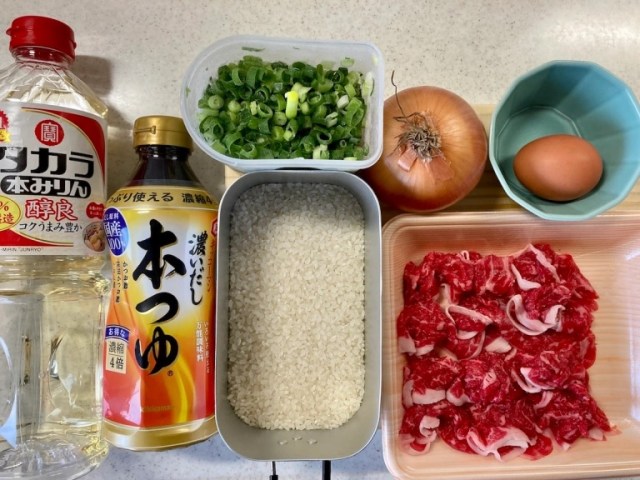
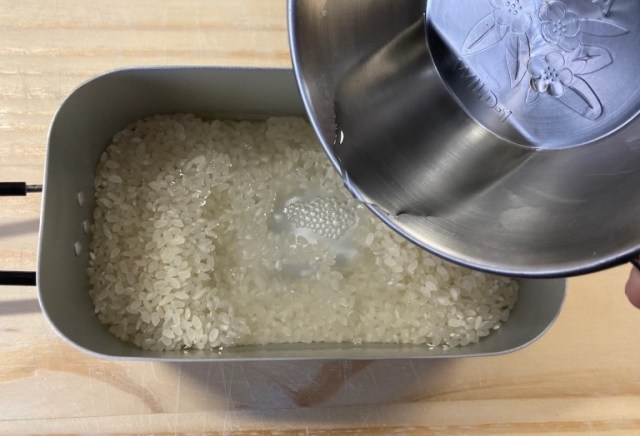
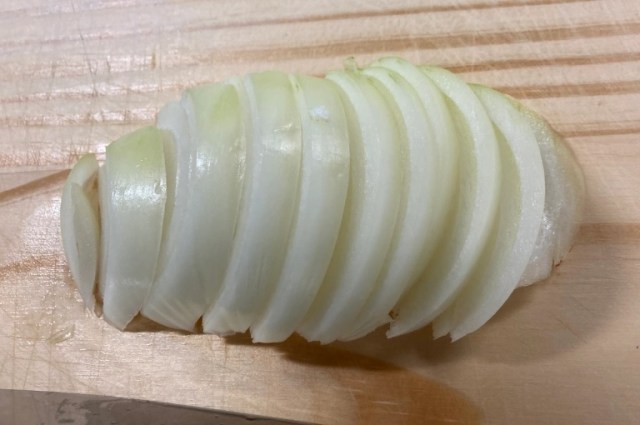
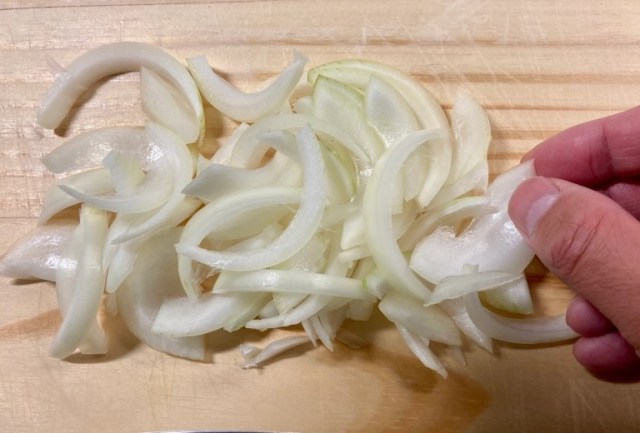

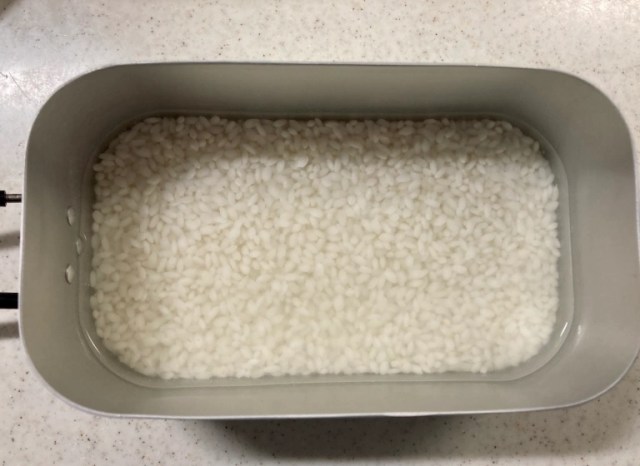
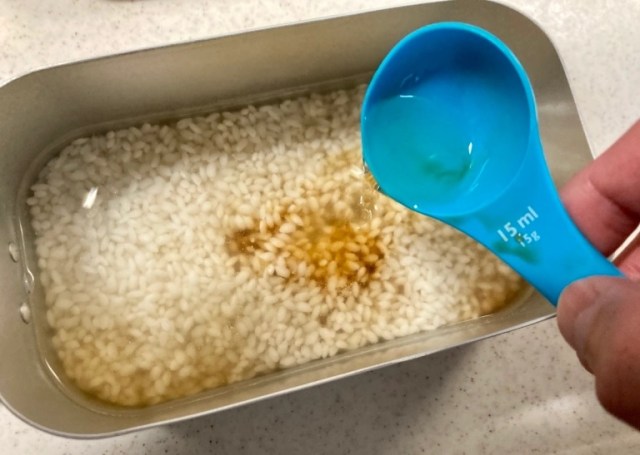
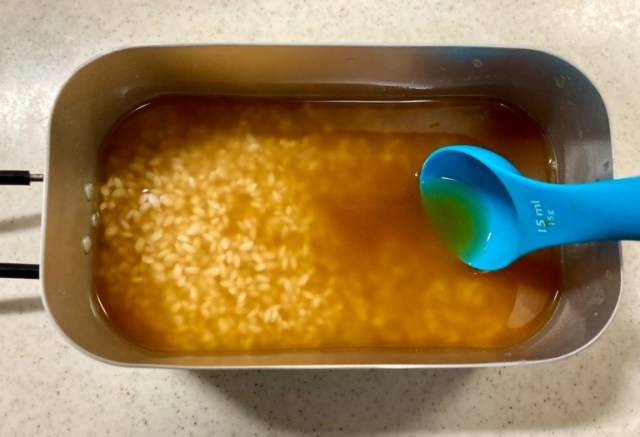
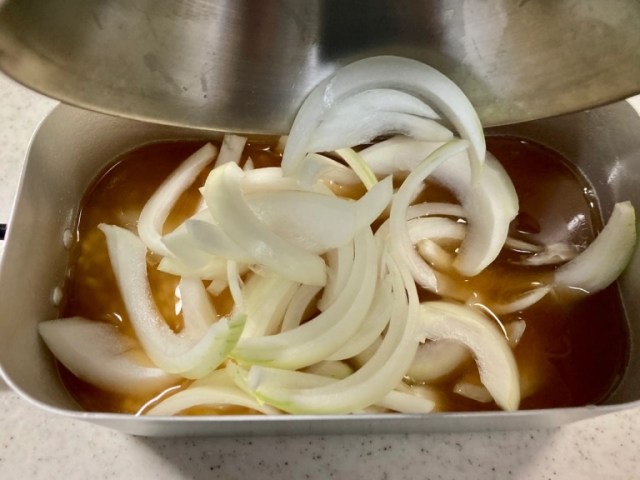
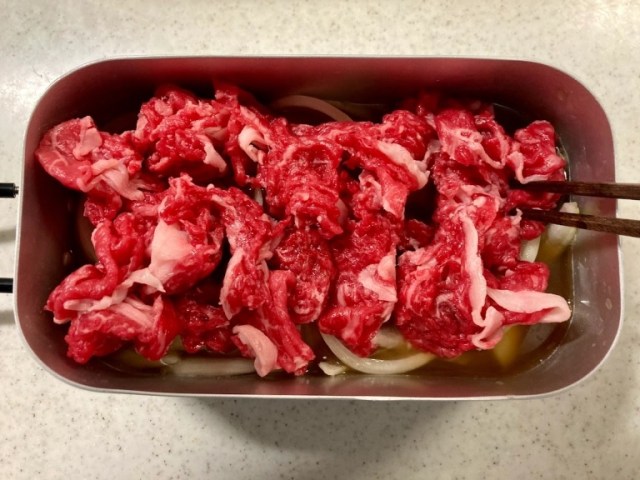
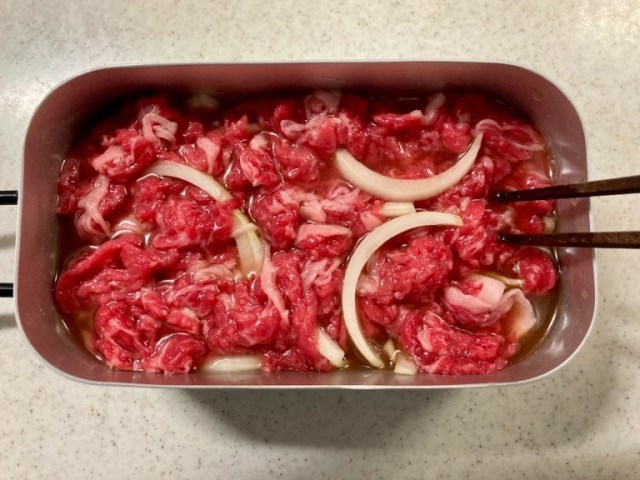
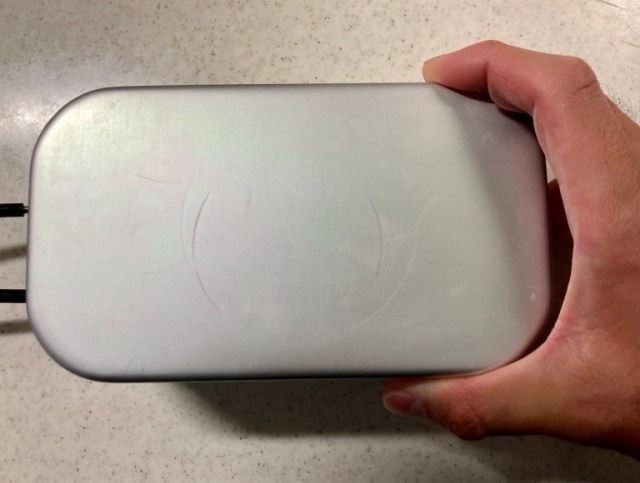
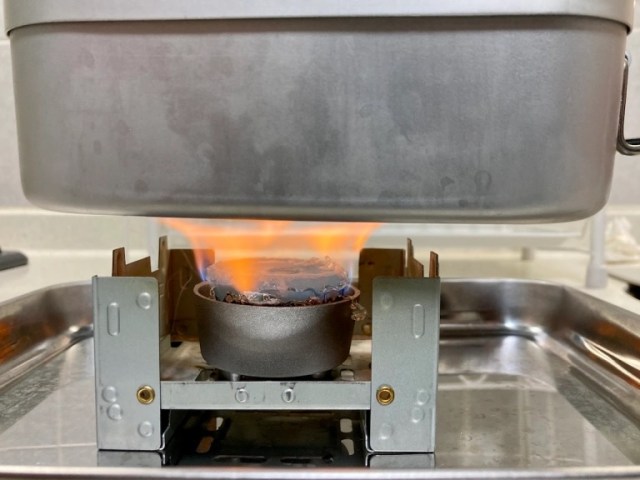
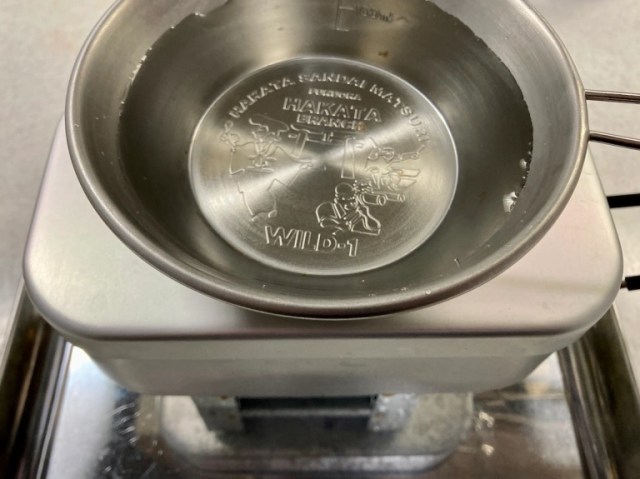
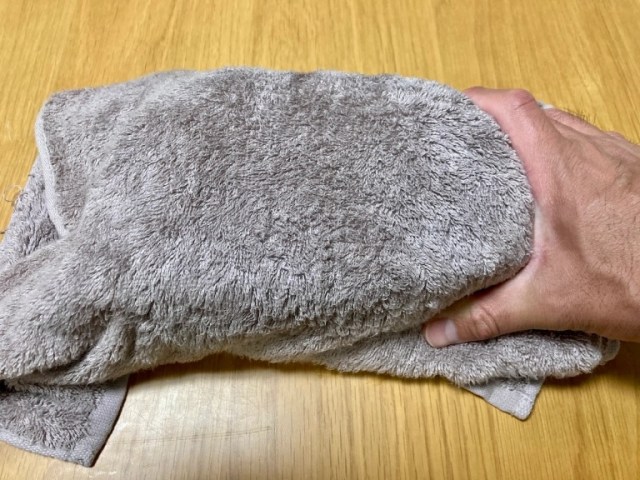

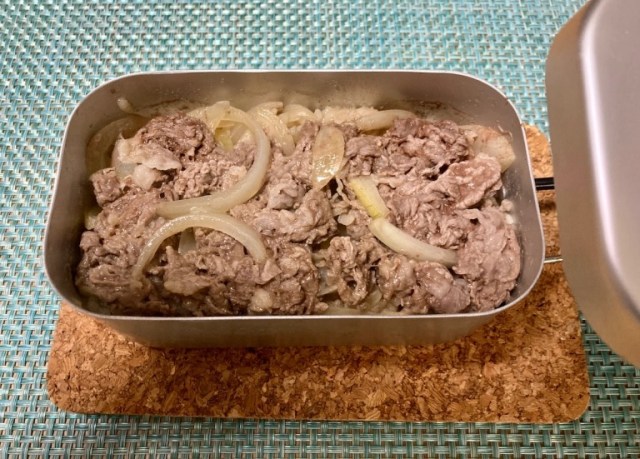
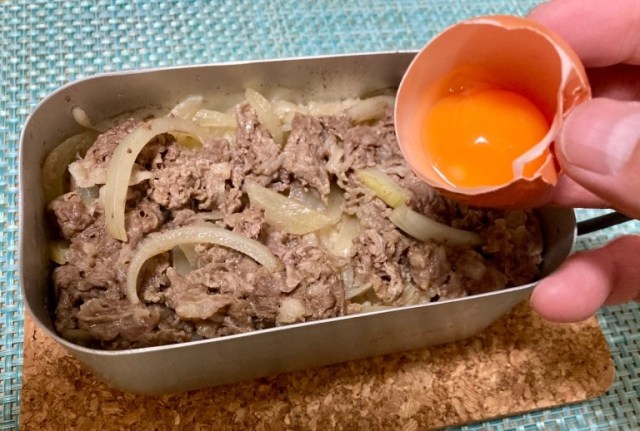
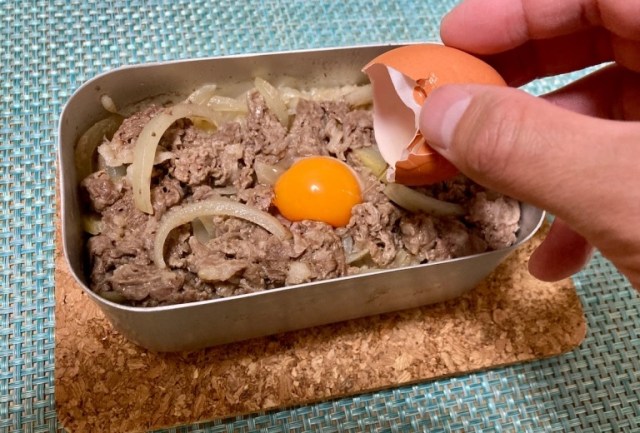
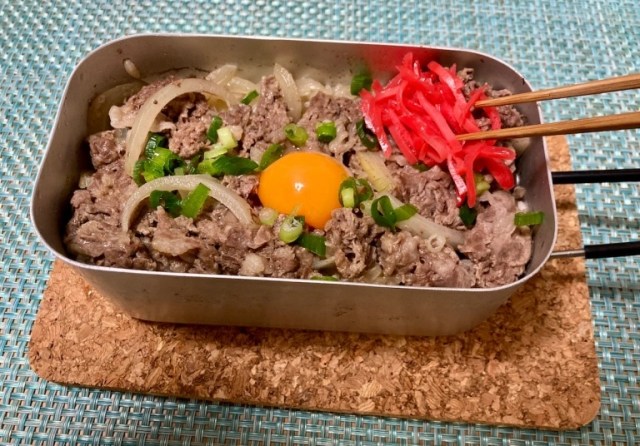
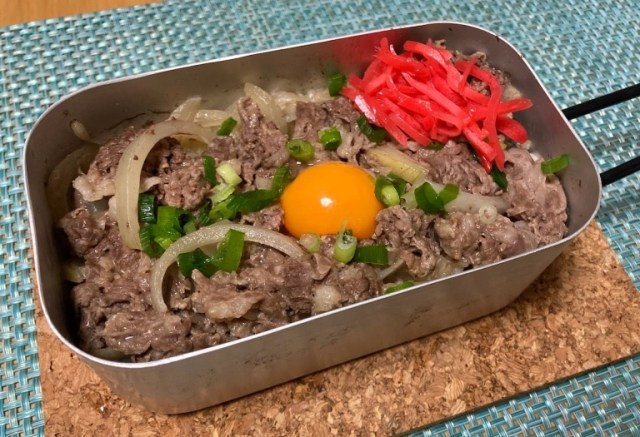
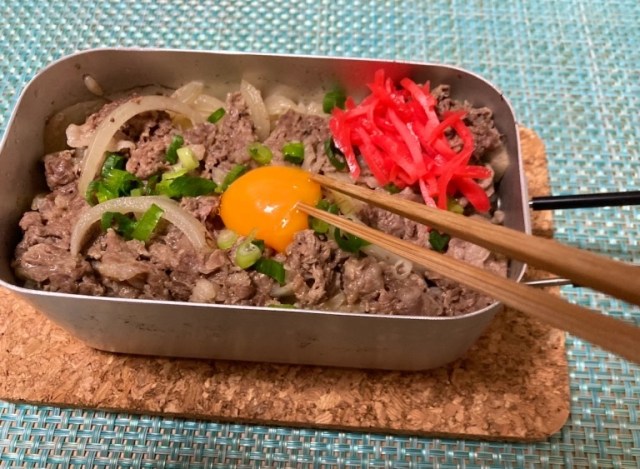
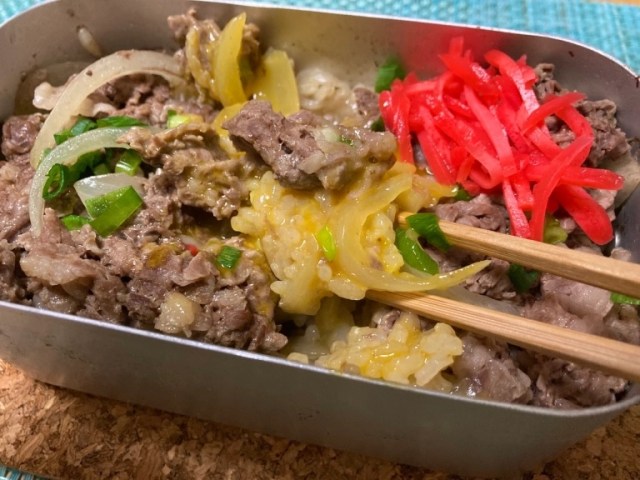
 We try an easy, cheesy, Italian-inspired camp meal using instant noodles【Recipe】
We try an easy, cheesy, Italian-inspired camp meal using instant noodles【Recipe】 From beef bowl to beef pouch? Taste testing Yoshinoya’s instant gyudon packs
From beef bowl to beef pouch? Taste testing Yoshinoya’s instant gyudon packs The gyudon beef bowl that cooks itself in a box like magic
The gyudon beef bowl that cooks itself in a box like magic Japan’s beef bowl king, Yoshinoya, releases new line of canned, ready-to-eat beef bowls
Japan’s beef bowl king, Yoshinoya, releases new line of canned, ready-to-eat beef bowls Hello Kitty and Badtz-maru grace high-class Arita-yaki ceramic Yoshinoya bowl that could be yours
Hello Kitty and Badtz-maru grace high-class Arita-yaki ceramic Yoshinoya bowl that could be yours Foreigner’s request for help in Tokyo makes us sad for the state of society
Foreigner’s request for help in Tokyo makes us sad for the state of society Seaside scenery, history, and so many desserts on Yokohama’s Akai Kutsu【Japan Loop Buses】
Seaside scenery, history, and so many desserts on Yokohama’s Akai Kutsu【Japan Loop Buses】 Mikado Coffee is a 76-year-old coffee chain with a major celebrity connection
Mikado Coffee is a 76-year-old coffee chain with a major celebrity connection Japan’s summertime towelket pillowcases are even better with the addition of Ghibli stars【Photos】
Japan’s summertime towelket pillowcases are even better with the addition of Ghibli stars【Photos】 Japanese city loses residents’ personal data, which was on paper being transported on a windy day
Japanese city loses residents’ personal data, which was on paper being transported on a windy day Japan’s massive matcha parfait weighs 6 kilos, contains hidden surprises for anyone who eats it
Japan’s massive matcha parfait weighs 6 kilos, contains hidden surprises for anyone who eats it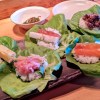 Why Gonpachi Nori-Temaki in Harajuku is a great Japanese restaurant for foreign tourists
Why Gonpachi Nori-Temaki in Harajuku is a great Japanese restaurant for foreign tourists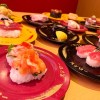 We eat 13 of the most highly recommended sushi items at Sushiro and pick the best of the best
We eat 13 of the most highly recommended sushi items at Sushiro and pick the best of the best Randomly running into a great sushi lunch like this is one of the best things about eating in Tokyo
Randomly running into a great sushi lunch like this is one of the best things about eating in Tokyo Akihabara pop-up shop sells goods made by Japanese prison inmates
Akihabara pop-up shop sells goods made by Japanese prison inmates McDonald’s new Happy Meals offer up cute and practical Sanrio lifestyle goods
McDonald’s new Happy Meals offer up cute and practical Sanrio lifestyle goods Japanese ramen restaurants under pressure from new yen banknotes
Japanese ramen restaurants under pressure from new yen banknotes French Fries Bread in Tokyo’s Shibuya becomes a hit on social media
French Fries Bread in Tokyo’s Shibuya becomes a hit on social media Red light district sushi restaurant in Tokyo shows us just how wrong we were about it
Red light district sushi restaurant in Tokyo shows us just how wrong we were about it New private rooms on Tokaido Shinkansen change the way we travel from Tokyo to Kyoto
New private rooms on Tokaido Shinkansen change the way we travel from Tokyo to Kyoto Tokyo Tsukiji fish market site to be redeveloped with 50,000-seat stadium, hotel, shopping center
Tokyo Tsukiji fish market site to be redeveloped with 50,000-seat stadium, hotel, shopping center Beautiful Ghibli sealing wax kits let you create accessories and elegant letter decorations【Pics】
Beautiful Ghibli sealing wax kits let you create accessories and elegant letter decorations【Pics】 Secret Kitchen bento serves Japanese flowers, birds, wind and moon in a box, but is it worth it?
Secret Kitchen bento serves Japanese flowers, birds, wind and moon in a box, but is it worth it? New definition of “Japanese whiskey” goes into effect to prevent fakes from fooling overseas buyers
New definition of “Japanese whiskey” goes into effect to prevent fakes from fooling overseas buyers Our Japanese reporter visits Costco in the U.S., finds super American and very Japanese things
Our Japanese reporter visits Costco in the U.S., finds super American and very Japanese things Studio Ghibli releases Kiki’s Delivery Service chocolate cake pouches in Japan
Studio Ghibli releases Kiki’s Delivery Service chocolate cake pouches in Japan All-you-can-drink Starbucks and amazing views part of Tokyo’s new 170 meter-high sky lounge
All-you-can-drink Starbucks and amazing views part of Tokyo’s new 170 meter-high sky lounge More foreign tourists than ever before in history visited Japan last month
More foreign tourists than ever before in history visited Japan last month New Pokémon cakes let you eat your way through Pikachu and all the Eevee evolutions
New Pokémon cakes let you eat your way through Pikachu and all the Eevee evolutions Disney princesses get official manga makeovers for Manga Princess Cafe opening in Tokyo
Disney princesses get official manga makeovers for Manga Princess Cafe opening in Tokyo Sales of Japan’s most convenient train ticket/shopping payment cards suspended indefinitely
Sales of Japan’s most convenient train ticket/shopping payment cards suspended indefinitely Sold-out Studio Ghibli desktop humidifiers are back so Totoro can help you through the dry season
Sold-out Studio Ghibli desktop humidifiers are back so Totoro can help you through the dry season Japanese government to make first change to romanization spelling rules since the 1950s
Japanese government to make first change to romanization spelling rules since the 1950s Ghibli founders Toshio Suzuki and Hayao Miyazaki contribute to Japanese whisky Totoro label design
Ghibli founders Toshio Suzuki and Hayao Miyazaki contribute to Japanese whisky Totoro label design Doraemon found buried at sea as scene from 1993 anime becomes real life【Photos】
Doraemon found buried at sea as scene from 1993 anime becomes real life【Photos】 Tokyo’s most famous Starbucks is closed
Tokyo’s most famous Starbucks is closed One Piece characters’ nationalities revealed, but fans have mixed opinions
One Piece characters’ nationalities revealed, but fans have mixed opinions We asked a Uniqlo employee what four things we should buy and their suggestions didn’t disappoint
We asked a Uniqlo employee what four things we should buy and their suggestions didn’t disappoint How to make a mouth-watering Japanese beef bowl in just five minutes 【RocketKitchen】
How to make a mouth-watering Japanese beef bowl in just five minutes 【RocketKitchen】 How to make a “curry rice bowl” using instant oatmeal instead of rice 【SoraKitchen】
How to make a “curry rice bowl” using instant oatmeal instead of rice 【SoraKitchen】 Japanese beef bowl chain Yoshinoya releases new canned, ready-to-eat rice bowls 【Taste Test】
Japanese beef bowl chain Yoshinoya releases new canned, ready-to-eat rice bowls 【Taste Test】 What does three months of Yoshinoya beef bowls do to your body? Medical study announces results
What does three months of Yoshinoya beef bowls do to your body? Medical study announces results Yoshinoya has a semi-secret chicken bowl you won’t find anywhere on its website【Taste test】
Yoshinoya has a semi-secret chicken bowl you won’t find anywhere on its website【Taste test】 Yoshinoya sells frozen beef bowl topping packs, but are they as good as the restaurant kind?
Yoshinoya sells frozen beef bowl topping packs, but are they as good as the restaurant kind? How to get a beef bowl breakfast in Japan for only 290 yen (some assembly required)
How to get a beef bowl breakfast in Japan for only 290 yen (some assembly required) Watermelon soup? We test out a strangely alluring recipe from Ajinomoto【Recipe】
Watermelon soup? We test out a strangely alluring recipe from Ajinomoto【Recipe】 The rice-less gyudon restaurant is here to serve your beefy needs
The rice-less gyudon restaurant is here to serve your beefy needs This easy, camp-friendly gratin dish will keep you warm this winter with hot cheesy creaminess
This easy, camp-friendly gratin dish will keep you warm this winter with hot cheesy creaminess Beautiful beefy Yoshinoya gacha capsule toys look good enough to eat or display【Photos】
Beautiful beefy Yoshinoya gacha capsule toys look good enough to eat or display【Photos】 Hot sandwich maker becomes hot dessert maker with super-easy choco banana pie recipe【SoraKitchen】
Hot sandwich maker becomes hot dessert maker with super-easy choco banana pie recipe【SoraKitchen】 Pharmacies in Japan now sell Yoshinoya beef bowls
Pharmacies in Japan now sell Yoshinoya beef bowls How to cook rice in a Ziploc container【SoraKitchen】
How to cook rice in a Ziploc container【SoraKitchen】 Why throw away your leftover ramen broth when you can use it to make awesome ramen rice instead?
Why throw away your leftover ramen broth when you can use it to make awesome ramen rice instead? Yoshinoya, Japan’s biggest beef bowl chain, is now serving fried chicken in Tokyo
Yoshinoya, Japan’s biggest beef bowl chain, is now serving fried chicken in Tokyo
Leave a Reply